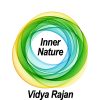Inner Nature: Great Migrations

By Vidya Rajan, Columnist, The Times
It’s migration season. The males have left, and I expect that the females will leave soon too. Flying geese honk overhead, the plethora of robins pecking in the garden have moved on, and the birdseed in the feeders lasts much longer with the insatiable starlings gone. With the big task of seasonal travel underway or looming for these and other animals, I will...
Inner Nature: Organizing Life

By Vidya Rajan, Columnist, The Times
The range of lifestyles, forms and patterns that characterize life are staggering in their variety, which rivets the eye and captures the imagination. In this article, I will look briefly at ways that humans have tried to organize life and capture both the similarities and differences.
The first documented person to attempt to classify life was Aristotle, student...
Inner Nature: The mystery of viruses

By Vidya Rajan, Columnist, The Times
Viruses are one of the greatest mysteries of biology. In fact, they are so problematic that some biologists do not consider that viruses are biological, relegating them instead to chemistry. Regardless of which camp one adheres to, viruses are significant to living organisms through their parasitism. Because of their obligate parasitism – they require living...
Inner Nature: Transparent Animals

By Vidya Rajan, Columnist, The Times
Recently I came across this quiz clue: What links barreleye fish, ghost shrimp, glass frogs, golden tortoise beetles, jellyfish and sea angels?[1] Besides the obvious fact that they are all animals, there were a few options I considered: 1. They are aquatic (but the beetles are not); 2. They are invertebrates (but frogs are not) and 3. They are transparent (and...
Inner Nature: The Poison Book Project

By Vidya Rajan, Columnist, The Times
Last week, I visited Connecticut. Walking in Hammonasset Beach State Park, I came across a bunch of birders all excited for the migratory birds that they were spotting. One of the birders and I got talking and told me he was an art restorer at Yale University.
This was very exciting for me, because I really love to read about how artists created pigments. For...
Inner Nature: Magnetic field sensing in animals

By Vidya Rajan, Columnist, The Times
In my previous Inner Nature article, the focus was on animals which make or use electricity to protect themselves or to apprehend prey. In this article, the focus moves to animals which sense and use magnetic fields. The staggering feats of navigation prowess of birds and butterflies are thought to be made possible by the Earth’s magnetic field to guide them...
Inner Nature: Animal electricity

By Vidya Rajan, Columnist, The Times
All living organisms are electric, since it is electricity – the movement of electrons – that powers life with energy. Then that energy, obtained from light or food, can be used to move molecules around the body or join atoms to make new molecules. That, in summary, is the process of metabolism. Rather than examining metabolic processes in this article,...
Inner Nature: Photosynthetic and light-harvesting animals

By Vidya Rajan, Columnist, The Times
Photosynthesis – a term that pretty much everyone understands – uses sunlight, carbon dioxide, water, and the light-harvesting green molecule, chlorophyll, to make sugars and release oxygen. Photosynthesis is carried out by free-living cyanobacteria, as well as plants and algae which contain chloroplasts, which are really just internal cyanobacteria, inside...
Inner Nature: Party Season

By Vidya Rajan, Columnist, The Times
Tipple. The season is the reason. Well, with party season behind us now, let’s delve into the ubiquity of alcohol during the holidays. It is considered a conversational lubricant and socially acceptable to drink in a group setting, but it is considered a problem when someone drinks alone without an interlocutor, or for the purpose of getting drunk. It can...
Inner Nature: Good news in science

By Vidya Rajan, Columnist, The Times
This month, I highlight some of the great things that are happening in the world which science had a hand in delivering. Enjoy.
Klamath dam is down and salmon swim freely upstream for the first time in 100 years.[1]
The mighty Klamath river flows from the Cascade mountains along the Oregon-California and empties into the Pacific Ocean. In 1918, the first dams...



